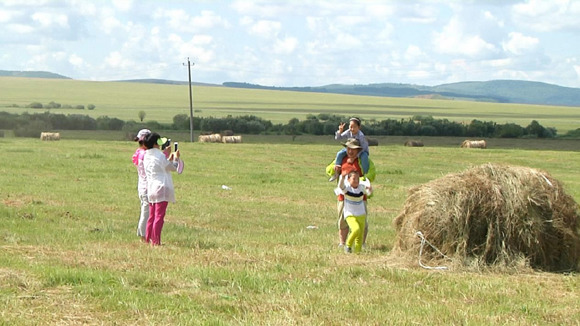
Mown grass for herds in winter. (Photo: CGTN /Ning Hong)
North China's Inner Mongolia Autonomous Region covers a vast area and has rivers, forests and grasslands in abundance. Over the years, however, the way people use these natural resources has changed. As a result, tourism is flourishing in the region.
Every summer, the region attracts visitors from across China.
Developing tourism is now top of the agenda here, including improving basic infrastructure. But the core priority is protecting the ecological environment. All lumbering activities have been forbidden in the region's Greater Khingan Mountains since 2015. The forests have since replenished themselves. Former lumberjacks are now involved in protecting the trees.

According to Li Chengzhi, the deputy director of Wulikuma Forest Farm, damaging forests and wetlands is strictly forbidden now, with any violations resulting in legal consequences.
In Genheyuan National Wetland Park, tourists turn to motor homes, self-driving trips and camping. Inner Mongolia attracted nearly one hundred million tourists in 2016, 15 percent more than the previous year.
Such rules also apply to projects aimed at developing tourism.
When building passages through the forest, people deliberately avoided the trees, and left gaps to let the sunlight pass through the canopy.
Genheyuan is one of the best preserved wetlands in China, and is held as an example of how a good ecological environment can benefit more people.


















































